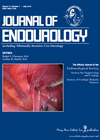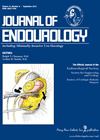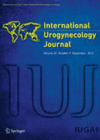
Journal Reviews archive for 2014
Prilocaine irrigation for pain relief after TURP
Transurethral resection of the prostate (TURP) is one of the commonest procedures undertaken by urologists. There are well known complications following the procedure which commonly include haematuria but also TUR syndrome, failure to pass urine and infections, amongst others. The...
A new haemostatic agent in tubeless PCNL
Tubeless percutaneous nephrolithotomy (PCNL) is increasingly being used in carefully selected patients to reduce hospital stay and analgesia requirements, especially in those with little bleeding who become stone free or have insignificant residual fragments (usually <4mm). Various agents have been...
A phase II dose-ranging study of mirabegron in patients with OAB
This was a multinational, multicentre, randomised, double–blind, double-dummy, parallel group placebo- and active- controlled phase II study. The study enrolled 1108 men and women aged 18 and over. The criteria were: patients must have had overactive blader (OAB) symptoms for...






